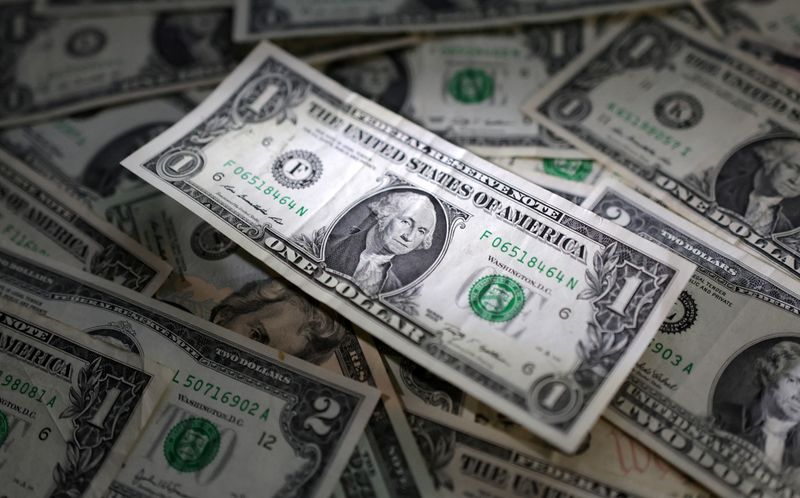Forex
Pound hits more than two-year high, dollar back under pressure

By Rae Wee and Alun John
SINGAPORE/LONDON (Reuters) -The pound climbed to its strongest level against the U.S. dollar in more than two years on Tuesday and other major currencies also gained as a pause in rising oil prices helped investors reverse the previous session’s shift towards the dollar.
Trade remained shaped by the prospect of upcoming U.S. rate cuts, which has pressured the dollar in recent weeks. Investors see a rate cut at the Federal Reserve’s September meeting as all but certain, with debate now focused on the possibility of a 50-basis-point cut instead of 25.
Sterling has been one beneficiary of the weakness in the U.S. currency, and on Tuesday the pound hit its highest since March 2022, and was last up 0.25% at $1.32195.
It got support from the contrast between Friday’s remarks by Federal Reserve Chair Jerome Powell, which underscored market pricing for meaningful U.S. rate cuts starting next month, and the more cautious comments of Bank of England Governor Andrew Bailey.
“(Bailey’s) comments stand to keep a wedge between US and UK rates, where money markets continue to price a shallower and slower easing cycle for the BoE,” said Chris Turner, global head of markets at ING, in a note to clients.
“It looks like we’ll have to revise our medium-term sterling profile higher,” he said.
The euro was up a whisker on the dollar at $1.1166, just off Monday’s 13-month top.
“After a strong rally since early August, it looks like euro/dollar could be due some consolidation,” Turner said. “The run-up in oil prices on the back of increased Middle East tension and Libyan supply challenges will not be helping.”
Oil prices paused recent advances to trade in a range on Tuesday, after a surge of more than 7% in the previous three sessions, on supply concerns prompted by fears of a wider Middle East conflict and the potential shutdown of Libyan oilfields. [O/R]
One currency boosted by the surge in oil prices is the Canadian dollar, last at C$1.3487 to the U.S. dollar having touched a five-month peak earlier in the session.
The yen was weaker with the dollar up 0.22% at 144.8 yen.
All of that left the at 100.88, just off a one-year low.
San Francisco Fed President Mary Daly also said on Monday a quarter-percentage point reduction in borrowing costs next month was likely.
“The question now is no longer whether the Fed is going to cut in September but by how much,” said David Chao, Invesco’s global market strategist for Asia Pacific ex-Japan.
“Powell left the door open for larger cuts in case labour conditions deteriorate. Investors believe that the Fed appears to be open to cutting rates faster than previously expected.”

Markets have already fully priced in a rate cut next month, and see about 100-basis-points worth of easing by the end of the year.
Elsewhere, the Australian dollar gained 0.16% to $0.6782, not far from a one-month high of $0.67985 hit on Friday, and the Swiss franc was at 0.8466 per dollar – around its strongest in three weeks.

 Forex3 years ago
Forex3 years agoForex Today: the dollar is gaining strength amid gloomy sentiment at the start of the Fed’s week

 Forex3 years ago
Forex3 years agoUnbiased review of Pocket Option broker

 Forex3 years ago
Forex3 years agoDollar to pound sterling exchange rate today: Pound plummeted to its lowest since 1985

 Forex3 years ago
Forex3 years agoHow is the Australian dollar doing today?

 Cryptocurrency3 years ago
Cryptocurrency3 years agoWhat happened in the crypto market – current events today

 World3 years ago
World3 years agoWhy are modern video games an art form?

 Commodities3 years ago
Commodities3 years agoCopper continues to fall in price on expectations of lower demand in China

 Economy3 years ago
Economy3 years agoCrude oil tankers double in price due to EU anti-Russian sanctions





















